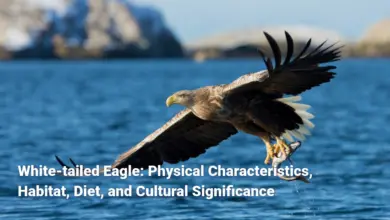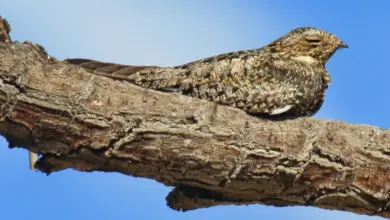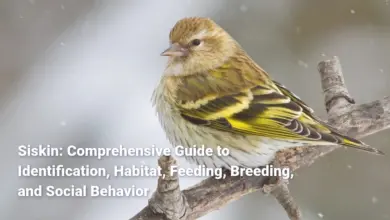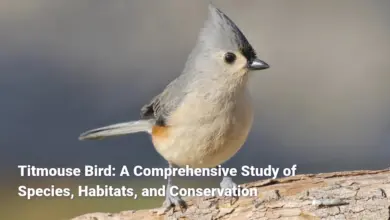Green Woodpecker: Comprehensive Guide to Habitat, Feeding, Nesting, Mating, Identification, and Conservation
A Detailed Look at the Green Woodpecker: Habitat, Feeding, Nesting, Mating, Identification, Vocalizations, and Conservation
The Green Woodpecker, formally known as Picus viridis, is a fascinating avian species that captivates birdwatchers and nature enthusiasts alike. Found across much of Europe and parts of western Asia, this bird is easily recognized by its vibrant green plumage and distinctive laughing call, often referred to as “yaffle.” While many people picture woodpeckers tapping rapidly on tree trunks, the green woodpecker is quite unique; it forages mainly on the ground, using its long, sticky tongue to extract ants and other invertebrates from the soil. This adaptation not only sets the green woodpecker apart from its fellow woodpecker species but also underscores its relationships with the ecosystems it inhabits.

In this article, we will explore several aspects of the green woodpecker’s life, including its habitat preferences, feeding habits, nesting behavior, distinctive features, and conservation status. By delving into these areas, we will better understand how the green woodpecker thrives in its environments and the challenges it faces in an ever-changing world. From its colorful appearance to its unique behaviors, the green woodpecker represents the beauty and complexity of avian life.
Habitat of Green Woodpecker
The habitat of the green woodpecker is akin to a rich tapestry woven from various ecological threads, where each element plays a role in supporting the life of this extraordinary bird. Preferring semi-open landscapes, the green woodpecker is most commonly found in a variety of habitats, including old deciduous forests, grasslands, and urban areas, demonstrating remarkable adaptability. Like a painter selecting colors for a masterpiece, the green woodpecker paints its life in strokes of green and gold as it seamlessly blends into these diverse environments.
Preferred Environments
- Wooded Areas: The green woodpecker favors old deciduous trees for nesting. These environments offer not only safety but also ample resources for foraging and nesting. The quiet rustle of leaves in a forest provides a symphony of solace, while the towering trees give rise to potential nesting sites high above ground predators.
- Grasslands and Pastures: These open spaces are vital for the woodpecker’s feeding habits, as they often forage for ants in short-grazed areas. The lush greenery that characterizes these pastures resembles a free buffet, enabling the green woodpecker to hunt with ease and efficiency. The availability of both mown and naturally maintained grasslands provides a suitable playground where they can engage in their favorite activity: finding ants.
- Urban and Suburban Areas: Surprisingly, green woodpeckers can flourish in urban settings, often observed in parks and gardens. Although the hustle and bustle of city life can be overwhelming, well-designed urban landscapes with mature trees allow these birds to navigate and thrive in their quest for sustenance. The coexistence of nature and urban life painted in vibrant greens makes for a fascinating spectacle.
- Hedgerows and Scrublands: Scattered trees and shrubby undergrowth provide a safe passage for these woodpeckers, allowing them to transition smoothly between feeding areas and nesting sites. These mixed environments offer rich ecosystems where the woodpecker can flourish, acting like the arteries in a body providing nourishment and vitality to the bird.
The green woodpecker’s habitat preferences reflect not only its biological needs but also its ecological relationships, which maintain the balance of populations of both flora and fauna within their environments.
Geographic Distribution
The geographic distribution of the green woodpecker is indicative of its adaptability and its ability to thrive across varied landscapes. Spanning most of Europe and parts of western Asia, the Picus viridis can be spotted in countries like Spain, France, the United Kingdom, and Germany. Each region presents unique habitats that cater to the green woodpecker’s lifestyle, allowing for a rich interaction with the environment. A vivid illustration of this distribution showcases the green woodpecker as a symbol of resilience, remaining steadfast in varying climates and terrains.
| Region | Characteristics |
|---|---|
| Western Europe | Abundant deciduous forests and gardens |
| Southern Europe | Warmer climates with diverse habitats |
| Eastern Europe | Presence in forests with rich insect life |
| Western Asia | Adapts to mountainous regions and woodlands |
Interestingly, the green woodpecker is quite selective about its range, typically avoiding northern and eastern parts of Europe, including Ireland and Greenland. Unlike many migratory species, the green woodpecker is non-migratory, staying within its home range year-round, making limited movements between breeding seasons and ideally not exceeding 500 meters.
This tendency to remain in one area allows the green woodpecker to establish a territory that features familiar feeding grounds and nesting sites. It highlights the importance of conserving these regions to ensure the well-being of the species. The interactions between the green woodpecker and its environment are a testament to its adaptability and ecological significance.
Feeding Habits
When it comes to feeding habits, the green woodpecker is a master of foraging, adept at extracting nutrient-rich ants and other invertebrates from the ground. Unlike its counterparts that peck at trees to find food, the green woodpecker employs a more unique and down-to-earth culinary style. Utilizing its specialized adaptations, it not only feeds its own needs but also plays a crucial role in controlling ant populations within their habitats this reciprocal relationship highlights the interconnectedness of wildlife within an ecosystem.
Primary Diet
At the core of the green woodpecker’s diet lies ants, an essential food source that makes up the majority of its nutritional intake. These insects serve as the primary protein source, especially during the breeding season when both parents are invested in nourishing their chicks. The ground foraging behavior akin to treasure hunting leads the woodpecker to probe into ant hills and nests nestled in the soil.
However, the green woodpecker is not solely reliant on ants. It also consumes other insects, such as beetles and termites, while occasionally indulging in fruits and seeds when in season. This flexibility in diet allows the woodpecker to thrive in various environments, replicating a forager’s move from stall to stall at a bustling outdoor market, selectively finding its next meal.
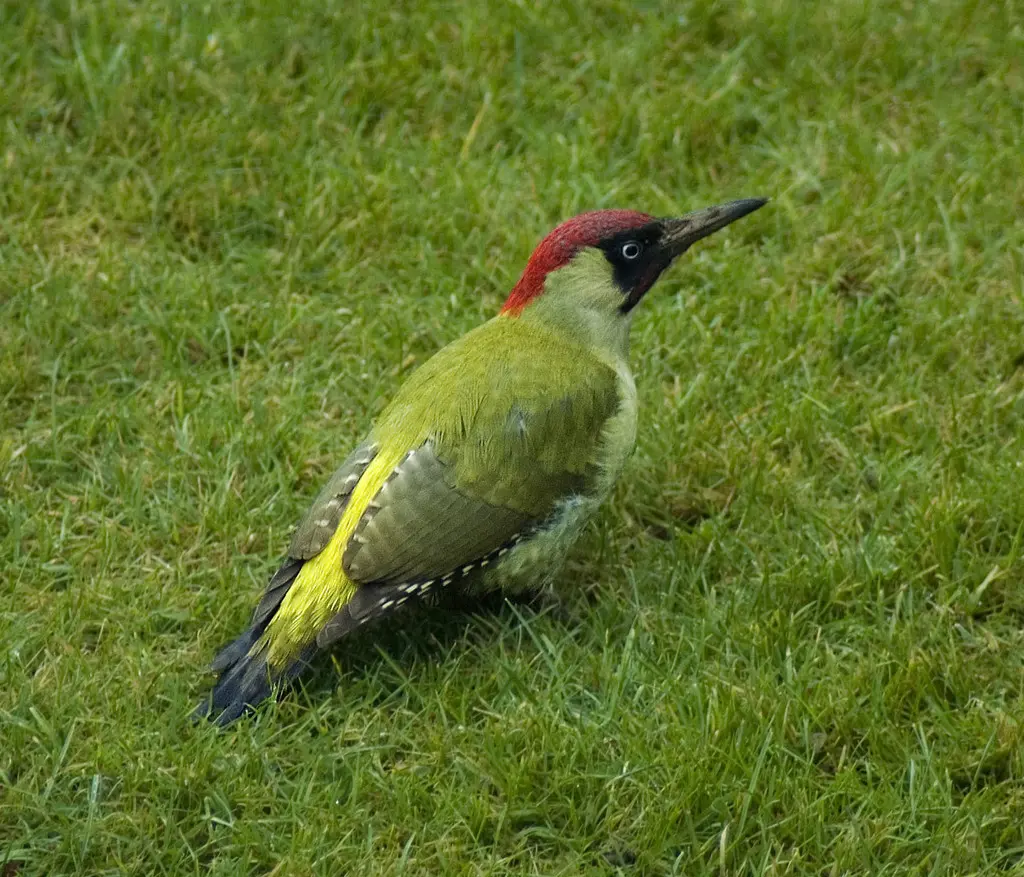
The hunting strategy of the green woodpecker involves using its keen eyesight and exceptional hearing to locate food sources, honed through evolutionary processes that have gifted it the ability to thrive in different aspects of its life. By carefully mastering the art of probing and digging with its long, powerful bill, the green woodpecker efficiently uncovers hidden treasures beneath the earth a poignant reminder of the intricacies of avian feeding ecology.
Foraging Techniques
The foraging techniques of the green woodpecker are as fascinating as the bird itself. With its long, chisel-like bill and an extraordinary tongue designed to capture insects, the woodpecker significantly differs from other woodpecker species. Instead of scaling trees, it often embraces the earth, uncovering a feast beneath the surface.
- Ground Probing: Using its bill, the green woodpecker expertly probes the ground to extract ants and other invertebrates. This behavior is reminiscent of a miner digging for precious gems, with the woodpecker creating small holes as it hunts for hidden delights.
- Tongue Adaptation: The species boasts one of the longest tongues relative to its body size of any bird, allowing it to reach deep within ant hills. The tongue’s sticky exterior is instrumental for capturing prey effectively. Imagine using a special tool designed specifically for a particular job: that’s the green woodpecker’s tongue in action.
- Acoustic Cues: Their acute hearing allows them to detect the sounds of ants moving within their nests, guiding them toward potential feeding sites. Each sound can serve as a beacon, directing their focus to the rich resources just below the earth.
Through these methods, the green woodpecker establishes itself as a unique and efficient forager, contributing to the natural balance of its habitat by maintaining insect populations.
Invertebrate Consumption
Invertebrates form a significant part of the green woodpecker’s diet, with a substantial focus on ants, their larvae, and other small ground-dwelling insects. This specialized diet reflects the bird’s ecological niche, as it thrives in environments rich with suitable prey. Invertebrates act much like the foundation stones of a building, providing crucial support to the species that rely on them for sustenance.
The consumption of ants its primary source occurs predominantly during ground foraging, where the woodpecker uses its remarkable proficiency in locating ant nests. By employing an array of techniques described above, the green woodpecker can extract insects efficiently, maintaining a fine balance in the ecosystem by controlling ant populations.
- Adaptations: The avian species’ body structure is tailored to this diet. Its long, straight bill is ideally shaped for ground probing, and its lengthy sticky tongue serves to capture slippery ants stuck deep inside their nests.
- Digestive Efficiency: The green woodpecker has developed a metabolism capable of processing protein-rich diets, allowing it to derive the maximum nutritional value from its preferred food sources.
- Diversity of Invertebrates: A variety of other insects makes its way into the green woodpecker’s diet, including beetles and larvae, contributing to a balanced nutritional intake. This behavior illustrates the importance of diverse food sources and adaptability in the bird’s ecological role.
Ultimately, the green woodpecker’s reliance on invertebrates for sustenance highlights its behavioral and anatomical adaptations that position it at the intersection of several ecological processes.
Nesting Behavior
Nesting behavior plays a crucial role in the life of the green woodpecker. Like a skilled architect, this bird meticulously carves out suitable cavities to serve as homes for its young. The entire nesting cycle, from construction to raising the young, represents the culmination of the woodpecker’s instincts and genetic inheritance.
Nest Construction Methods
The green woodpecker typically selects old deciduous trees to establish its nesting sites. Using its powerful bill, the male woodpecker takes the lead in carving out a cavity, demonstrating remarkable determination and precision. Picture an artisan slowly chiseling away at a block of stone, each tap of the tool revealing a work of art within.
- Location: Cavities are often located 3 to 10 meters above ground, providing safety from ground-dwelling predators. These heights act as fortresses for their young, securing them during vulnerable stages of life.
- Nesting Material: Unlike some bird species that contribute various materials to their nests, green woodpeckers utilize primarily wood chips produced during the excavation process. This natural insulation offers protection and comfort for newly hatched chicks.
- Time Investment: The carving of these nests can take several weeks, depending on the wood’s hardness and the desired size of the cavity. These careful, dedicated efforts reflect the importance of creating a home that will sustain the next generation.
The nesting construction process is as creative as it is functional, allowing green woodpeckers to adapt to their environmental needs while ensuring the safety and nourishment of their young.
Egg Laying and Incubation
Once the nesting cavity is complete, the green woodpecker enters the reproductive phase, involving egg laying and incubation. The timeline is characterized by remarkable cooperation between the breeding pair, underscoring the communal aspect of their lifestyle.
- Egg Laying: The female typically lays between 5 to 7 smooth, white eggs in the cavity. These eggs will become the next generation of woodpeckers, ensuring the continuation of the species.
- Incubation: The incubation period generally spans around 14 days, during which both parents share the responsibilities. The male and female take turns, ensuring that the eggs remain warm and protected from external threats.
- Chick Development: After hatching, the chicks remain in the nest for approximately three weeks before fledging. During this critical time, both parents are actively involved in nurturing the young, feeding them a protein-rich insect diet to promote healthy growth.
This comprehensive nesting behavior contributes to the survival of the green woodpecker population, ensuring each generation is equipped to thrive in their environments.
Nesting Sites
Green woodpeckers rely on specific tree cavities as nesting sites, chosen based on several ecological factors. These choices dictate the success of breeding and the subsequent survival of the young. Understanding nesting sites provides insight into how these birds interact with their habitats.
- Tree Selection: Opting for old or decayed trees, the green woodpecker capitalizes on nature’s gradual decay, utilizing dead or dying trees that are more vulnerable and easier to excavate.
- Environmental Features: Suitable nesting sites usually feature a mix of nearby grassy areas, enabling easy access to the woodpecker’s primary food source, ants. This relationship exemplifies how nesting and foraging habitats intertwine to support the bird’s life cycle.
- Predator Avoidance: Establishing nests high in the trees minimizes the risk of predation. The height serves as a strategic advantage, similar to building a castle on a hill, where defense becomes inherently easier.
In essence, the choice of nesting sites reflects the green woodpecker’s acute awareness of its environment and its intricate relationship with the surrounding ecosystem.
Mating Habits
Mating behavior in the green woodpecker intertwines complex social interactions with distinct courtship displays. During the breeding season, which typically occurs from late March to early July, male green woodpeckers engage in captivating behaviors aimed at attracting potential mates.
Courtship Displays
The courtship process for green woodpeckers is a vibrant display of vocalizations and physical gestures. Males perform elaborate routines that demonstrate their fitness and territorial claims while enticing females to choose them as partners.
- Drumming: Drumming on trees serves as an effective means for males to signal their presence and establish territory. This behavior resonates through the woodland, echoing like a musical call to attract females.
- Vocal Displays: The male emits a series of calls, combining their unique “yaffle” sound with other melodious notes, creating an exhibition of sound that conveys both strength and attractiveness. This auditory performance plays an integral role in courtship.
- Physical Displays: Males also engage in impressive flight patterns, showcasing their agility and fitness. These aerial dances further captivate potential mates, spotlighting the importance of physical prowess.
Through these courtship displays, male green woodpeckers communicate their desirability to females while asserting their territory, creating a rich tapestry of interaction and connection within the species.
Breeding Seasons
Breeding seasons in the life of the green woodpecker embody cyclical renewal and the passage of time. These carefully scheduled periods allow the species to synchronize reproduction with environmental factors that enhance chick survival.
- Timing: Primarily breeding between April and June aligns with optimal weather conditions and food availability providing the necessary sustenance for both parents and their offspring.
- Social Cohesion: The cooperative nature of green woodpecker mating habits fosters pair bonding beyond single breeding seasons. Many pairs remain together, with both parents engaged in nurturing and protective duties throughout the nesting cycle.
- Parenting Roles: After the eggs hatch, both parents commit to feeding the young, ensuring a diverse diet of insects and maintaining their health. This shared responsibility emphasizes the importance of collaboration in raising the next generation.
These breeding habits illustrate the foundational role of social structures and environmental awareness integral to the success of green woodpeckers.
Identification Features
Identifying the green woodpecker can be a delightful experience, as its striking appearance and unique characteristics make it stand out from other avian species. With several distinguishing features, recognizing this woodpecker becomes a colorful endeavor.
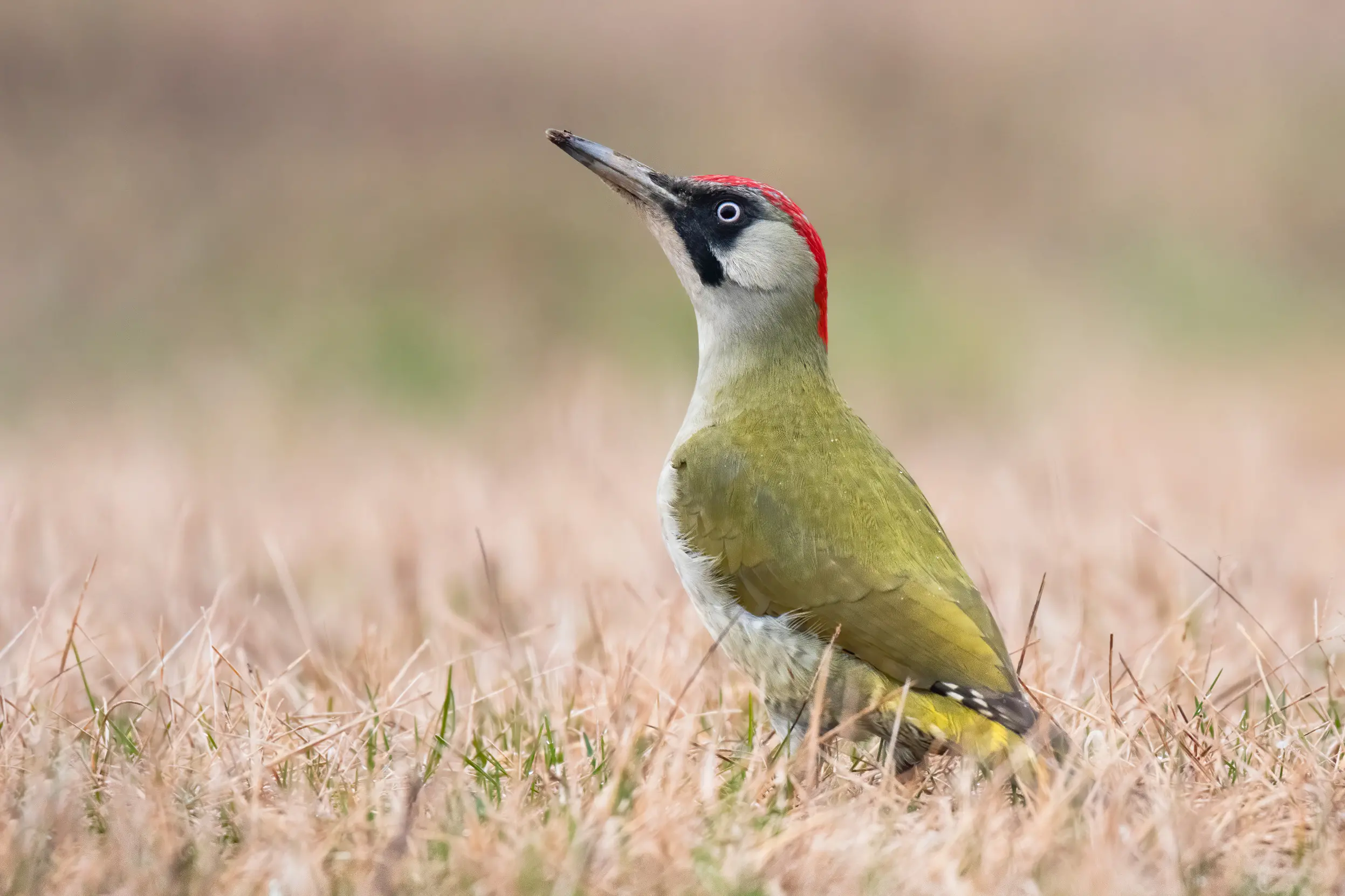
Physical Characteristics
- Size and Shape: As the largest woodpecker species in the UK, the green woodpecker measures approximately 31-33 cm in length, with a wingspan of around 40-42 cm and an average weight of 490 grams. Its robust body shape and size resemble a graceful athlete, capable of navigating diverse environments.
- Coloration: The green woodpecker is easily recognized by its olive-green upperparts and pale yellow underbelly. The contrast between the colors forms a beautiful palette, often reminiscent of sun-drenched meadows and lush forests.
- Facial Markings: The species showcases a striking red cap on the males, accompanied by a black moustache stripe adorned with a red center, creating a distinctive visage. In contrast, females possess a plain black moustache, highlighting the sexual dimorphism present within this species.
- Beak and Tongue: Its long, powerful bill is ideally adapted for probing both the ground and trees. The bird’s long tongue, capable of extending behind the skull, perfectly complements its feeding habits, reaching deep within the earth for ants and other insects.
- Flight Pattern: Unlike many other bird species, the green woodpecker’s flight pattern is characterized by a unique bouncing motion, where it flaps and glides gracefully, seamlessly transitioning between foraging and flying.
The combination of these physical characteristics makes the green woodpecker a visually striking species, easily identifiable in its natural habitat.
Coloration and Markings
Coloration and markings are fundamental to the identity of the green woodpecker, distinguishing it from fellow woodpecker species.
- Distinctive Plumage: The vibrant green feathers prominently cover the bird’s body, showcasing a muted undertone of yellow on the belly and a bright yellow cape on its back. In flight, the yellow rump becomes a noticeable signal to observers, allowing for easy identification against the often-dense tree canopy.
- Facial Features: The male’s red crown combined with the contrasting black facial markings creates a striking visual effect. This unique morphology not only captures the eye but also plays a role in communication during courtship rituals.
- Juvenile Appearance: Juvenile woodpeckers display a more subdued coloration, which lends to their camouflage as they grow and begin to learn the dynamics of their environment. Their mottled appearance, devoid of the vivid markings of adults, highlights the gradual transformation into mature individuals.
The striking combination of coloration and markings not only enhances the green woodpecker’s aesthetic appeal but also serves essential functions in communication, mating, and species identification.
Vocalizations
The green woodpecker’s vocalizations form an essential aspect of its identity, serving as an auditory signature that resonates throughout its habitat. The various calls and sounds employed by the species illustrate intricate social interactions and aid in defining territory.
Calls and Sounds
- Dominant Calls: The liveliness of the green woodpecker is encapsulated in its characteristic “laughing” call, often described as a series of joyous notes. This sound serves as an iconic feature, echoing through forests and fields alike.
- Call Structure: The sound comprises several components characterized by an upsweep, transitioning to a downsweep, with frequencies ranging predominantly from 1.1–2 kHz. This distinct structure sets it apart from other woodpecker species, allowing for identification through auditory means.
- Social Communication: Vocalizations serve multiple purposes, including territory establishment, mate attraction, and signaling distress. These calls not only facilitate social interactions but also deepen community bonds by communicating needs and intentions.
- Behavioral Correlations: Observations indicate that the frequency and type of calls correlate with specific behaviors, providing insight into the internal states of the birds and enhancing our understanding of communication in this species.
Through these vocalizations, the green woodpecker articulates its presence, navigating its relationship with the environment and other species.
Communication with Other Woodpeckers
Communication extends beyond individual iconic calls; the green woodpecker engages with other woodpeckers through a variety of interactions, underscoring the complexity of their social lives.
- Territorial Displays: Males use vocalizations and drumming patterns to assert dominance and defend their territories from perceived threats. This lively display mimics the competitive nature of an athlete, with each participant vying for a favorable position.
- Inter-species Communication: Green woodpeckers exhibit selective communication strategies, enabling them to interact with other species within similar habitats. Through nuanced vocalizations, they convey caution or alert to nearby avian neighbors, fostering a cohesive ecosystem.
- Parent-Young Interactions: As parents, adult woodpeckers utilize specific calls to communicate with their young, guiding them during the fledgling stage. This nurturing communication serves as a reminder of the parental responsibilities essential for raising healthy offspring.
In essence, the social fabric of the green woodpecker’s life is intricately woven through the sounds and calls that permeate its environment, representing the connections that define its essence.
Conservation Status
The conservation status of the green woodpecker, categorized as “Least Concern” by the IUCN Red List, reflects its relative adaptability and stable population trends. This designation grants hope for the species, offering insights into its current ecological standing and potential future challenges.
Population Trends
- Stable Population: Population estimates indicate that the green woodpecker population in Europe ranges from approximately 587,000 to 1,050,000 breeding pairs. This stability illustrates a species that has managed to thrive despite various external pressures and habitat changes.
- Regional Variations: While the population remains resilient overall, specific geographic areas may experience localized declines, where habitat loss or fragmentation plays a role. This situation highlights the importance of ongoing monitoring and conservation measures.
- Adaptability: The green woodpecker’s ability to adapt to both rural and urban environments contributes significantly to its stable status. This adaptability underscores the intrinsic relationship between human-modified landscapes and the opportunities available to wildlife.
- Conservation Awareness: Continued attention toward habitat preservation is critical for maintaining healthy populations of the green woodpecker. Interventions aimed at conserving their habitats, especially in areas experiencing deforestation or urbanization, can significantly impact positive population trends.
The conservation narrative surrounding the green woodpecker speaks to the interconnectedness of ecosystems and the responsibility that every stakeholder bears in ensuring their protection.
Threats and Challenges
Despite its current favorable conservation status, the green woodpecker faces various threats that pose challenges for its long-term sustainability.
- Habitat Loss: Deforestation and urbanization contribute to the degradation of environments essential for nesting and foraging. The ongoing trend of habitat fragmentation reduces suitable living spaces, creating barriers for movement and access to resources.
- Harsh Weather Conditions: Climatic fluctuations, particularly harsh winters, significantly influence food availability. Cold weather can prevent green woodpeckers from accessing vital resources, affecting their overall health and reproduction rates.
- Competition and Predation: The introduction of predatory species and competition with other avian species for nesting sites may further challenge green woodpecker populations. This underscores the fragility of interspecies relationships within ecological systems.
By recognizing these threats and challenges, conservation efforts can better tailor strategies aimed at mitigating potential declines and ensuring the ongoing success of the green woodpecker’s populations.
Fun Facts About Green Woodpeckers
The green woodpecker captivates birdwatchers with its distinctive traits and behaviors. Here are a few fun facts that highlight the uniqueness of this species:
- Distinctive Laugh: The green woodpecker’s iconic laughing call, or “yaffle,” not only serves as a vital communication tool but also adds an element of joy to the ambient sounds of the woods.
- Ground Specialists: Unlike most woodpeckers, the green woodpecker spends a considerable part of its time foraging on the ground, showcasing its unique feeding behavior searching primarily for ants hidden in the soil.
- Largest in the UK: As the largest woodpecker species in the UK, with striking plumage and substantial size, the green woodpecker commands attention when spotted in its habitats.
- Monogamous Pair Bonds: Green woodpeckers are known to form long-lasting partnerships, often returning to the same nesting sites each year, reflecting their commitment and bond as mates.
- Caching Ants: Demonstrating remarkable foraging strategies, green woodpeckers can cache thousands of ants in various locations to ensure food availability during less favorable times.
These delightful facts illustrate not only the fascinating aspects of the green woodpecker’s life but also its vital role in the broader ecosystem.
Unique Behaviors
Green woodpeckers are equipped with unique behaviors that set them apart from other birds, enhancing their adaptability and success.
- Caching Behavior: One of the most remarkable traits is the ability to cache food. Woodpeckers store ants in tree crevices for later consumption up to 2,000 insects in one day demonstrating both efficiency and foresight.
- Feeding Method: Their proclivity for ground foraging signifies a significant departure from conventional woodpecker behaviors. Such unique feeding habits allow them to remain versatile in searching for food and adapting to their surroundings.
- Social Interaction: Throughout their lifecycle, green woodpeckers display strong social bonds. They engage in vocalizations and calls, establishing personal connections and creating a dynamic social environment.
- Unique Flight Patterns: The green woodpecker’s distinctive flight path, characterized by rapid near-ground flaps followed by graceful glides, enhances its ability to evade predators while moving between foraging sites.
These intriguing behaviors reflect the green woodpecker’s ability to interact with its environment in multifaceted ways, enriching our understanding of avian adaptability.
Trivia and Myths
In addition to their fascinating biology, green woodpeckers are steeped in folklore and fascinating trivia, which enriches their cultural significance.
- Weather Indicators: Locally, some believe the green woodpecker’s calls might signify impending rain, earning the nickname “rain bird.” Such folkloric associations illustrate the deep connection between humans and the natural world.
- Good Luck Charm: In various cultures, green woodpeckers are seen as symbols of auspiciousness and protection. This belief reflects the bird’s positive associations with elements of good fortune.
- Misperceptions about Damage: Contrary to common misconceptions, green woodpeckers do not significantly damage trees. Their foraging focuses on dead wood rather than living trees, promoting a more positive understanding of their ecological role.
- Less Feeder Activity: Unlike other bird species, green woodpeckers rarely visit feeders, preferring open ground where they can search for their preferred food sources.
Through the lens of trivia and myths, green woodpeckers occupy a special place in cultural narratives, endearing them to both enthusiasts and casual observers alike.
Conclusion
The green woodpecker stands as a testament to the marvels of avian life, embodying resilience, adaptability, and the intimate connections shared between species and ecosystems. As we continue to unravel the intricacies of its behavior, habitat, and conservation, we are reminded of the importance of safeguarding these incredible creatures and their environments. Protecting the green woodpecker ensures that future generations can appreciate its beauty, witness its behaviors, and ultimately embrace the shared wonders of nature. Through conservation efforts and awareness, we can foster a world where the green woodpecker continues to thrive amid the canopy of our forests, fields, and urban landscapes.





